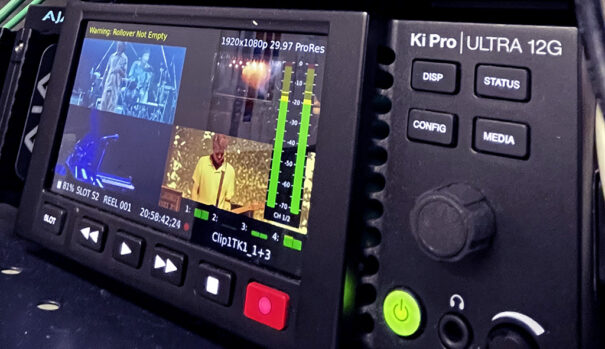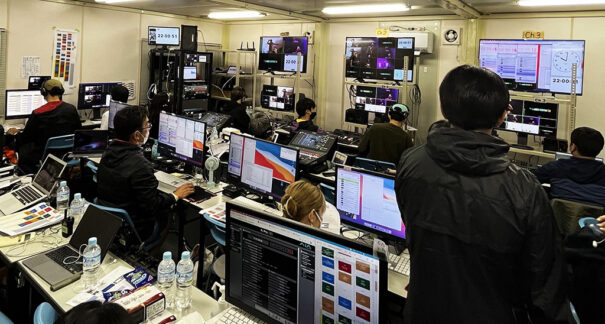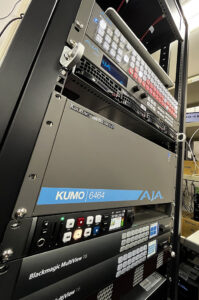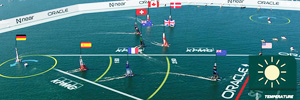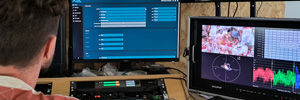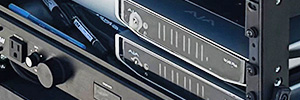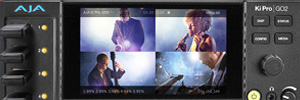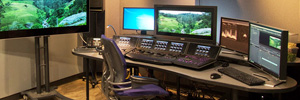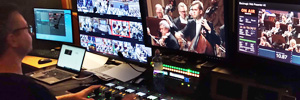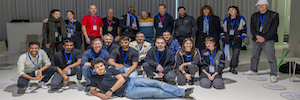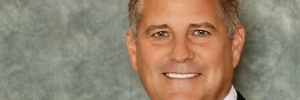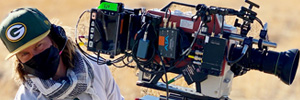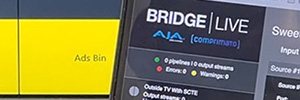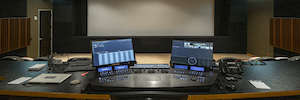Japan’s Fuji Rock festival hits YouTube with AJA solutions
A number of AJA solutions deployed by Tokyo-based Nouvelle Vague enabled the Fuji Rock festival to celebrate its 25th anniversary with a YouTube broadcast of several of its most important concerts.
For the three-day festival, Nouvelle Vague developed a workflow that included capturing the four main stages of the venue and the complete production of the official festival broadcast, which was viewed by 200,000 viewers. While broadcast quality was paramount to the success of the hybrid event, the team also wanted to capture the highest audio fidelity for all performances, as the recordings would also be given to the artists for promotional purposes.
Masayoshi Ikeda, vice president and director of Nouvelle Vague, actively collaborated in the design of the workflow that linked the Fuji Rock venue (Naeba Ski Resort) with the production services company’s main control centre. For this purpose, Ikeda used AJA’s FS4 to convert video sources to 29.97p for ingest and streaming; Kumo 6464 for signal routing; Io 4K Plus for editorial I/O; Ki Pro Ultra 12G and Ki Pro GO for redundant recording of Apple ProRes and H.264 OG-DANTE-12GAM for audio embedding and de-embedding using Dante; T-Tap Pro for output from the playout system; and Bridge Live for SDI encoding and RTMP streaming outputs.
AJA workflow at Fuji Rock
For the festival’s on-site system, Nouvelle Vague transmitted 59.94i SDI signals from each of the four stages to FS4, which converted them to 29.97p for ingest and transmission. To route the converted signals, they used Kumo 6464, which provided the flexibility to distribute a single video signal to multiple channels. The ingest system included Apple Mac Studio with Softron MovieRecord to continuously capture and record three channels from all four stages (a total of seven sources) to NAS storage. To prepare for any problems with the NAS network, the team used Ki Pro Ultra 12G for redundant recording and simultaneous baseband capture without a network connection. They also recorded sources from all four scenarios with Ki Pro GO as a backup.
To embed and de-embed audio, the team used eight OG-Dante-12GAM cards, an openGear 12G-SDI audio bridge embedded to Dante IP. They used two cards for audio embedding on each stage, two for the broadcast, two for embedding the programme output, one for embedding the looping videos (which would be played during the intervals of the broadcast on YouTube) and one for backups.
During the festival, editors would set up the performances for broadcast immediately after capture. At this point, Io 4K Plus was used to ingest the networked recordings into the DCCs. For broadcast, the team generated the final edited videos using Softron’s OnTheAir solution for live production, with T-Tap Pro handling the output. Bridge Live handled encoding and simultaneous streaming to YouTube with three RTMP channels.
IP, key for Fuji Rock
Nouvelle Vague began the transition to IP workflows last year. By now, it has consolidated an audio system that uses Dante to easily handle large-scale networks, helping to reduce system costs. The team integrated OG-DANTE-12GAM to eliminate the process of converting SDI to analogue audio while minimising deterioration in sound quality. The team integrated Bridge Live to provide a flexible streaming solution that works with HLS, SRT and RTMP. “We chose Bridge Live because we prefer AJA products for their broadcast-grade compatibility and stability,” says Ikeda.
The AJA team considers the Fuji Rock 2022 broadcast to be a success, as it resulted in improved network bandwidth and the addition of Mac Studio to record up to eight channels at 60p, offering greater system stability. In the near future, Nouvelle Vague intends to further integrate IP workflow technologies into its system and expand its capabilities to offer SRT transmission with on-site operations. By linking event venue feeds to its nOOb Studio in Tokyo, the team will further develop a remote workflow for recording, editing and transmission, while reducing production costs. As Ikeda emphasises: “The important thing is to consider all the possibilities of your production environment and implement new technologies or products to innovate your workflow and produce world-class content.
¿Te gustó este artículo?
Suscríbete a nuestro NEWSLETTER y no te perderás nada.



